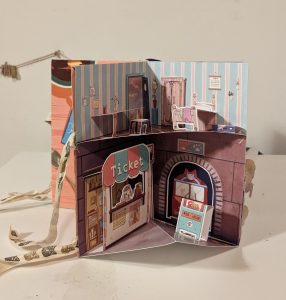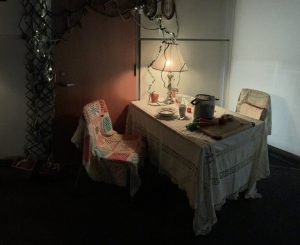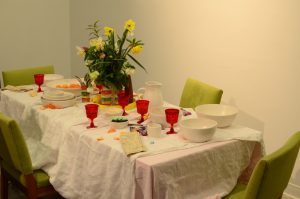The Wanderers of the 16 Stars
Brendan Robert John Denesiuk
See it On Campus: Level 2
Visitor Info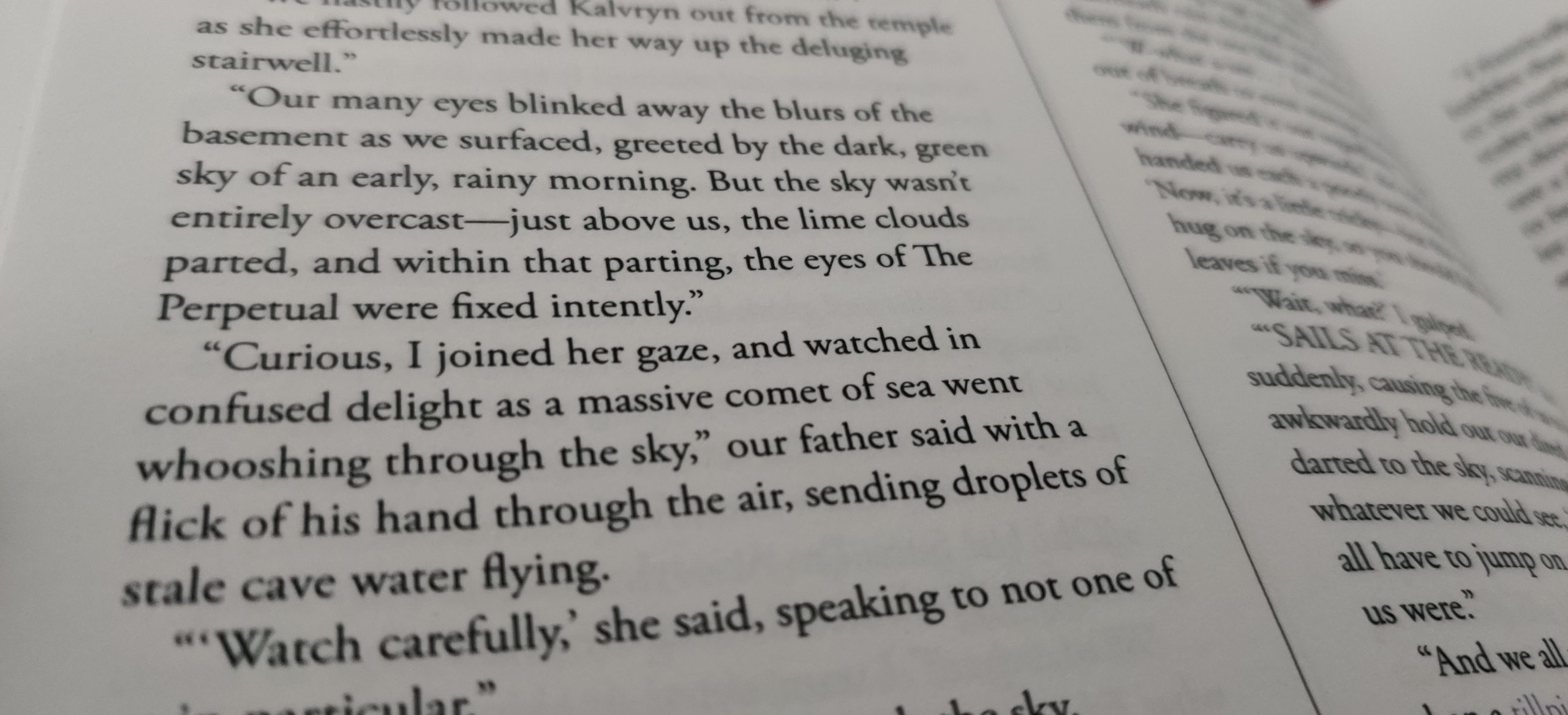
.look out for hidden messages, like this one.
On a dark, rainy evening in January 2007, an overly tired museum worker would find a book that would change the course of her entire life. . .
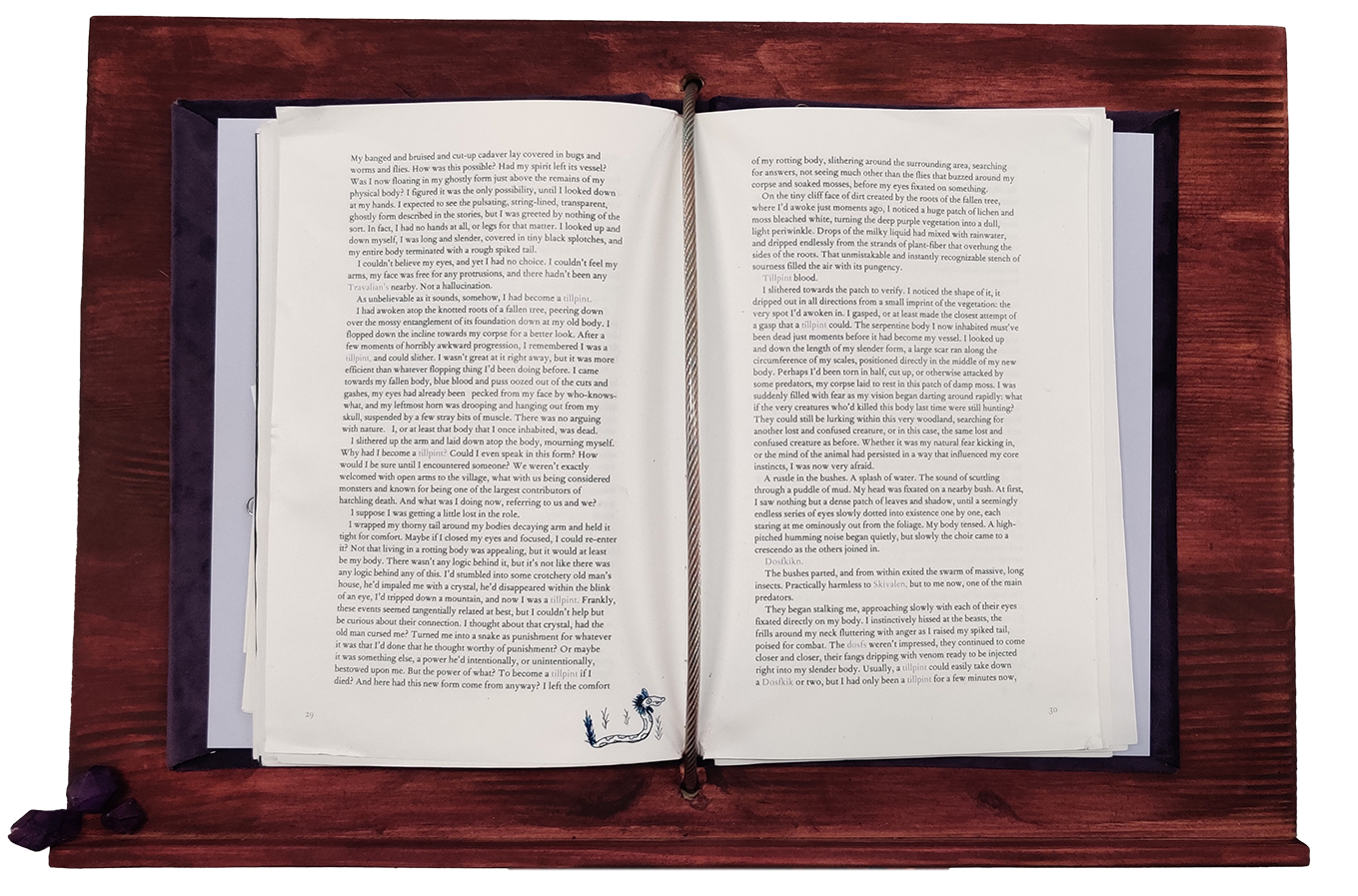
.i’m still unsure of the book’s origin, i have no idea where jared’s would’ve even gotten such a thing.
_______________________________________________________
The Story:
The Wanderers of the 16 Stars exists as Part 1 of my 6 part science fiction epic, following the journey of the aliens Trancolren, Leoca, and Tortallus across the 16 stars of the Ethshad1. Part 1 follows the journey of Trancolren and Leoca across their home-world, The Twins of Skia: a pair of planets connected by a gargantuan pillar of water.
- A word that refers to Space in Skekstion (the language of Trancolren and Leoca)
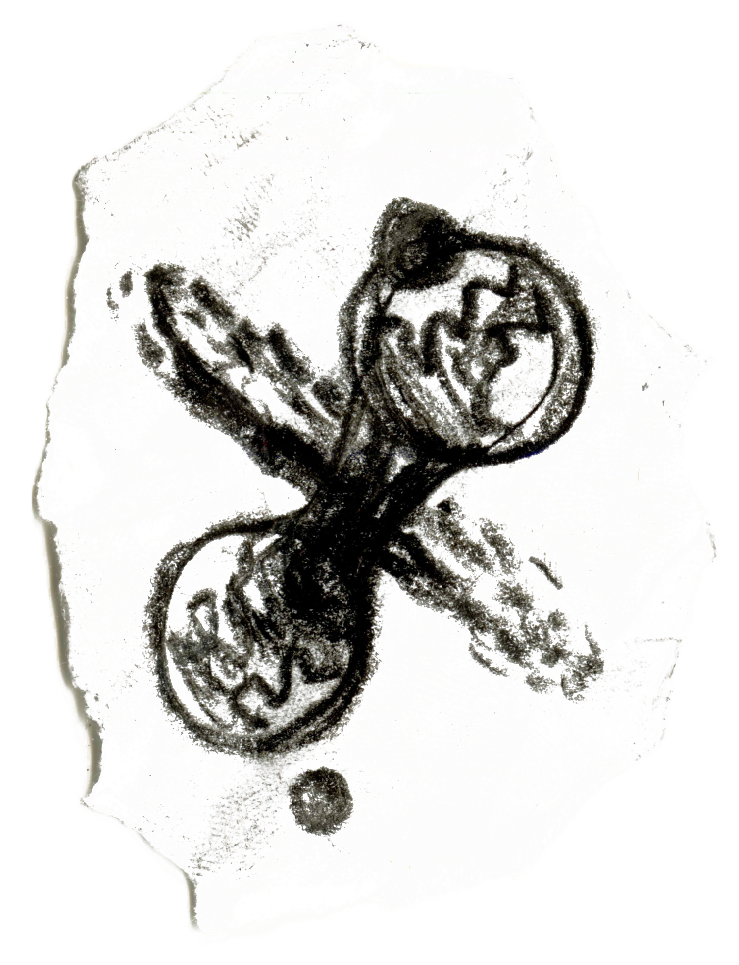
A charcoal sketch of The Twins of Skia.
The siblings begin to notice strange environmental occurrences all across their land: plants growing faster than usual, weather patterns shifting wildly, and the temperature of their local lake increasing rapidly. In their investigations of these strange happenings, they become the targets of two, crystal covered, gargantuan beasts, named Aviosyl and Ailphi.
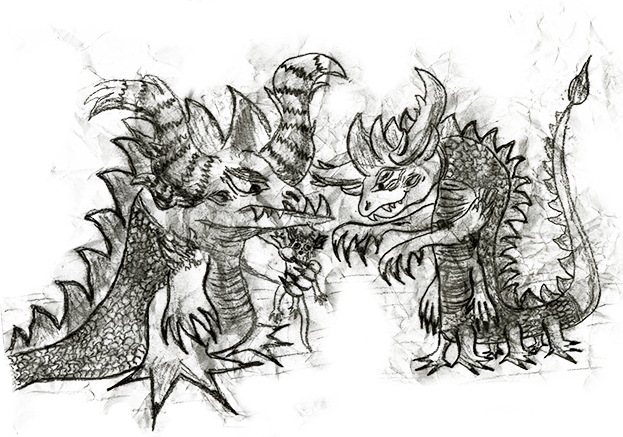
A charcoal sketch of Aviosyl (left) and Ailphi (right)
The siblings journey across their home world to escape from the pair of monsters, and become entrusted with an ancient artifact: a collection of the very same crystals embedded within the great beastsm kept under the close protection of their parents for many years. The mission for the siblings is simple: get off of Skia, and return with help from the stars.
Running parallel to the stories of Trancolren and Leoca, we follow Cameron Jade Joule, a (human) woman who works at a museum (at least, that’s what her boss would call it) that collects, categorizes, and archives alien artifacts. In reality, the “museum” is nothing more than an overly rich weirdo’s collection of random junk and nonsense, labelled as alien artifacts; with everything from “UFO Parts” (random pieces of scrap metal), to “poetry” (nonsensical symbols scribbled onto dirty paper), to collections of weird, unreadable textbooks and brochures. Cameron goes along with the the “work” for nothing more than the shockingly good pay, spending her hours listening to weird albums she finds in the shelves of the warehouse and wondering why the hell her boss (a man named Richard Francis Jareds III) bothers with this bizarre and worthless hobby.
Until one evening in January,
when Cameron finds a mysterious book filled with alien writing,
with a velvet cover, embedded with glowing crystals.
With the the assistance of some textbooks of unknown origin, she begins to translate it into English from i-swork-gi2, and unravels the story of Trankolren, Leoka, and their journey across the 16 Stars of the Ethshad. In this process, she leaves behind footnotes and interjections to assist readers with aspects of the story not yet explained by Trankolren.
2. An alien language used throughout the story. Elaborated on much further down the page.
The further she makes her way into the story,
the more she finds that the the book is far more than just a weird, alien novel,
Because the book
is
alive.
The text shifts and changes, seemingly communicating to both her and itself. Upon realizing this, Cameron begins leaving behind penned-in notes all across the pages; her scattered thoughts and scribbles engulfing the margins of the story with every single thought.
──── ──── ──── ──── ──── ──── ──── ────
You can read all of Part 1 here
──── ──── ──── ──── ──── ──── ──── ────
_______________________________________________________
The Concept:
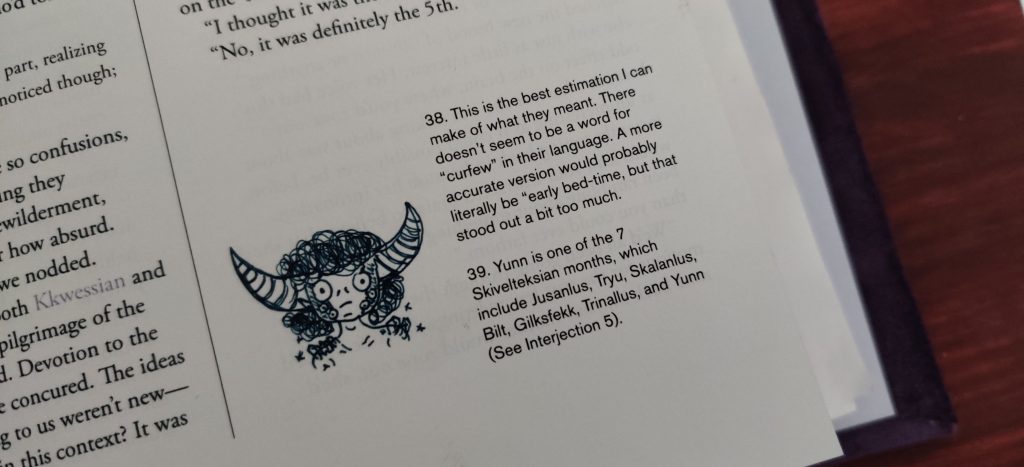
The Wanderers of the 16 Stars is a deconstruction of literature, story, and the nature of the book as an object.
Through storytelling, typography, writing, and illustration, this novel works to subvert and break away from what a reader might typically expect, testing their eye for consistency and conformity, building and building up layers and layers of of confusion and subtle breaks in logic throughout.
You’ll find yourself noticing subtle shifts in perspective and layout, building to more complex and confusing subversion the further you make your way into the depths of text, breaking both conventions of storytelling, character perspectives, typographic conventions, layout, and the English language itself.
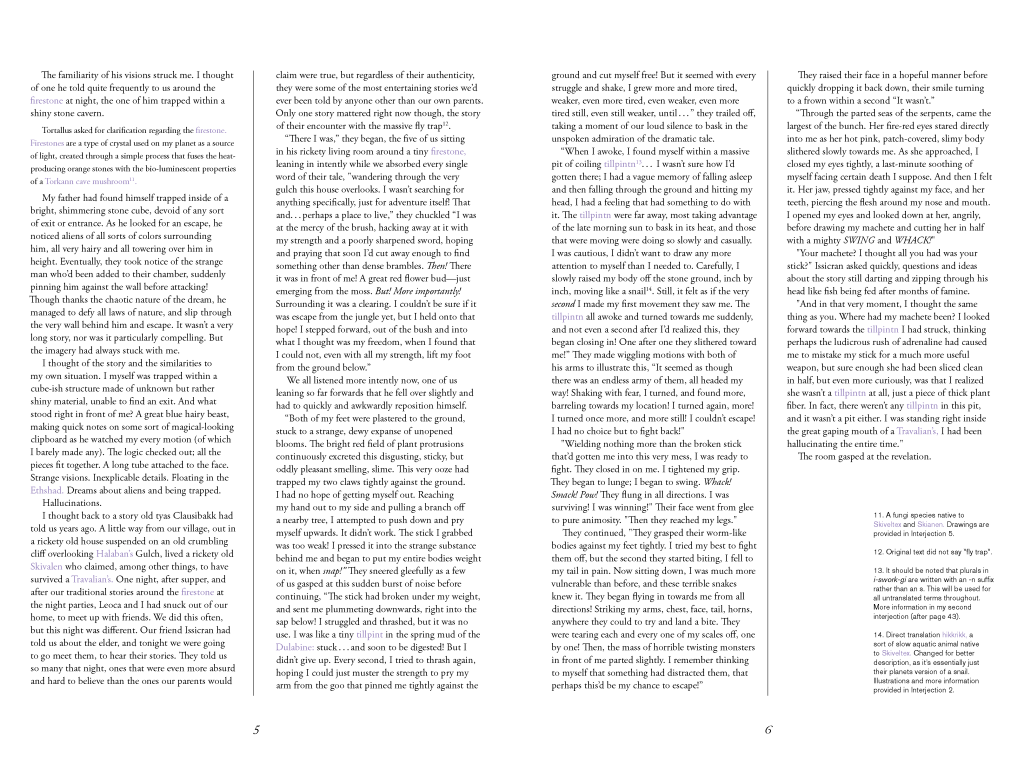
The general layout of sections following the narrative of Trankolren and Lioka. Note the two column layout, the footnotes (bottom right), and the “mid-paragraph interjection” with smaller text (top left).
An example of illustrations within the spreads. These illustrations are created by the character Trankolren, jotted down into his sketchbook throughout his journey. Illustrations like these appear throughout the text in reference to characters, objects, or to break-up sections and/or the start/end of chapters.
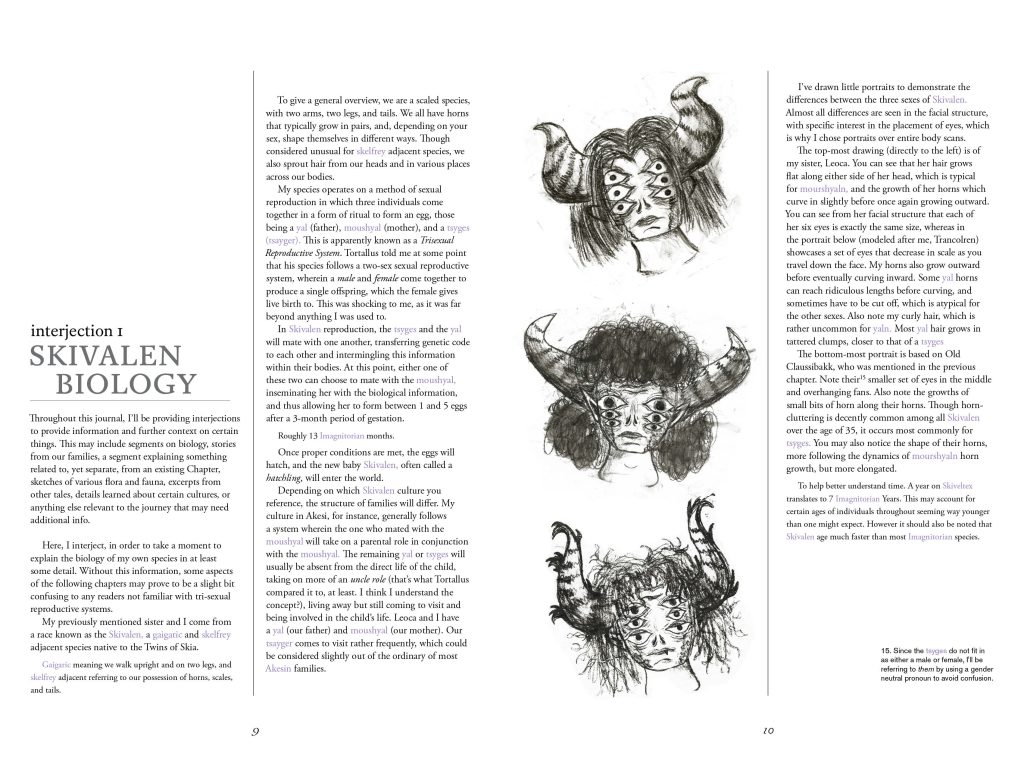
One of the main goals of this project was to create a functional suspension of disbelief and an immersive of experience for the reader. Though this is mostly achieved through the world-building and playfulness of the writing/layout shifts, I decided to create some “real-world objects” within the Universe of the story, to help support whatever Cameron may talk about throughout. This helps to add a level of “authenticity” to things, as, otherwise, we’re just taking her word for whatever weird objects she mentions without any sort of proof or reference.
These objects include some that were discovered alongside the text, which include:

a series of photographs, taken with a severely damaged camera
.i believe the bottom 3 from the left show the process of the “nexus” they took to get off skiveltex.
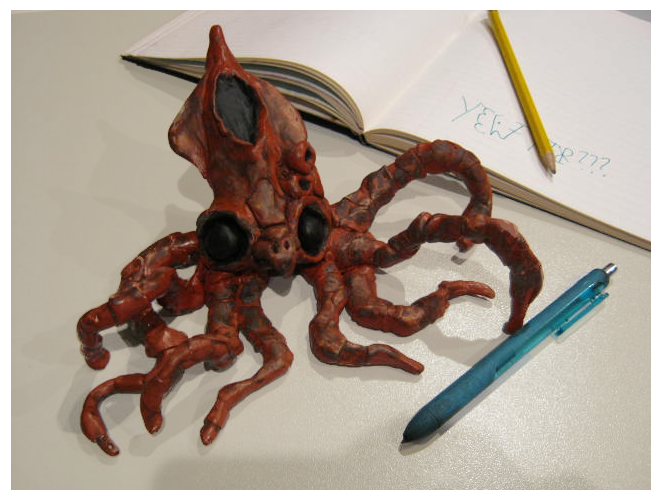
A roughly sculpted and roughly painted statue of a squid (or squid-like creature)
.i believe it’s called “torutum”.
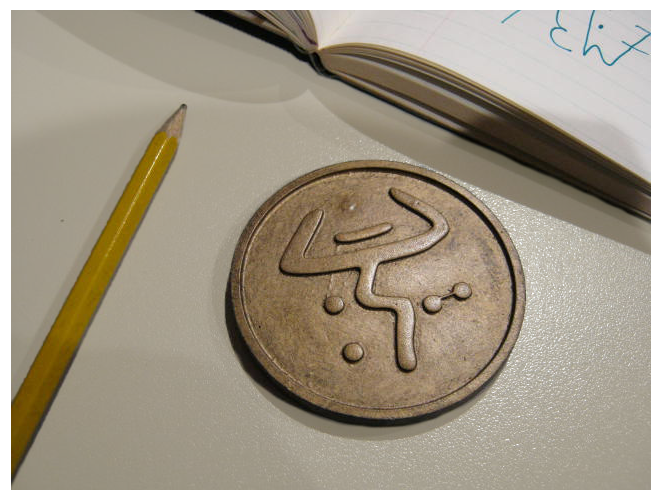
A sort of brass coin or medallion, with a symbol embossed onto the surface.
Each of these objects works to foreshadow future events within existing or future parts of the story. The damaged photographs document events from throughout Part 1 and past it (note the silhouette of Aviosyl in the top-left damaged photograph, for example). The squid-like statue is a reference to a creature who becomes the focus of Part 2 and Part 3, and the coin/medallion uses the symbol of Falstarr Jine, which is referenced subtly throughout Part 1.
In addition to these objects found alongside the mysterious text, we also have documentation of the bizarre textbooks that allowed for its translation:
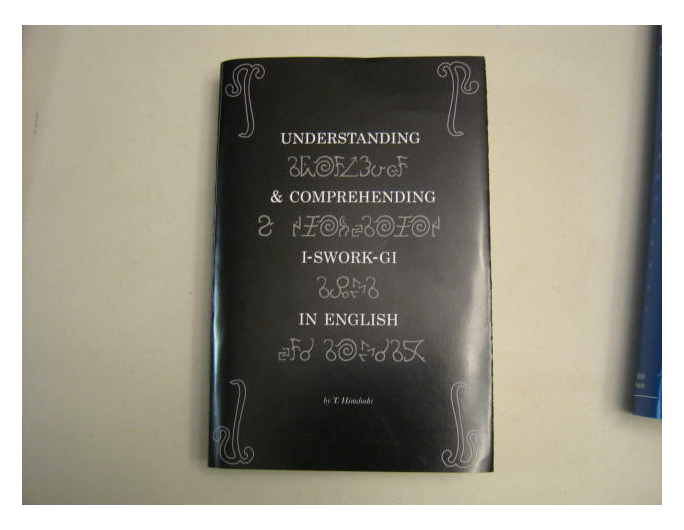
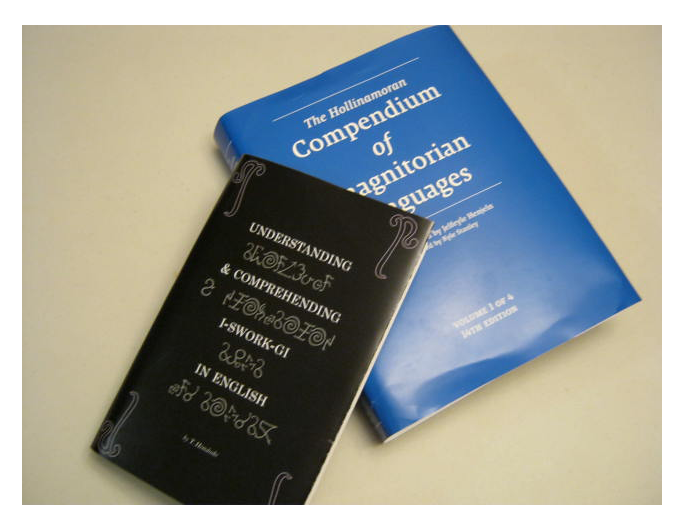
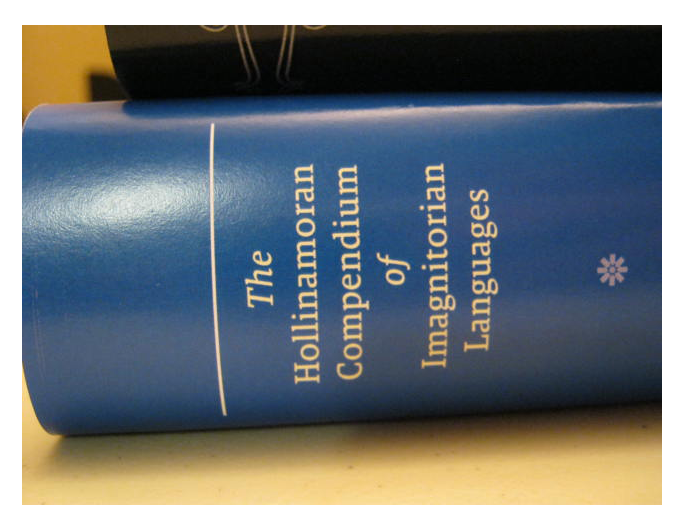
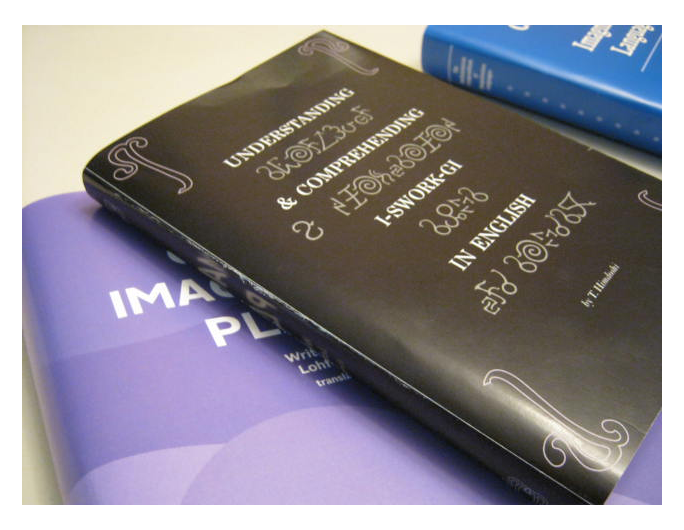
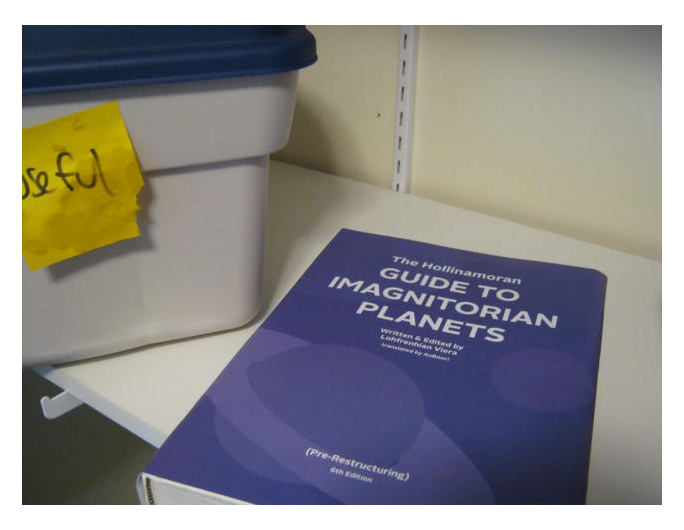

Apologies for any and all issues with the photo resolution of these images. Cameron did take these photographs in early 2007 after all, and, in all likelihood, took the photos with a camera found within one of Jareds’ many bins of almost-broken nonsense.
.hey now, that was my own camera thank you very much.
_______________________________________________________
The Typography:

The typography within this project has two functions: to allow for perspective shifts within the same chapter and within the same paragraph, and to create cinematic effects on the page, adding effects that we might see in film, that are otherwise difficult to create (or at least, more difficult to express) solely through traditional writing.
Within Kameron’s sections of the text, we are shifted from the typical two-column ragged-right layout into a single-column justified block. The unique aspect of Kameron’s chapters come from her own editing of her initial writings. As Kameron goes back to remove certain parts of what she’s already written, we find that the the text itself is never deleted, but rather simply crossed-out, with her new writings marked in red. This creates pages that read almost like editor’s drafts. This, paired with the overly formal looking layout, creates a very strange effect when reading, with a contrast between something that seems both polished and very unfinished.
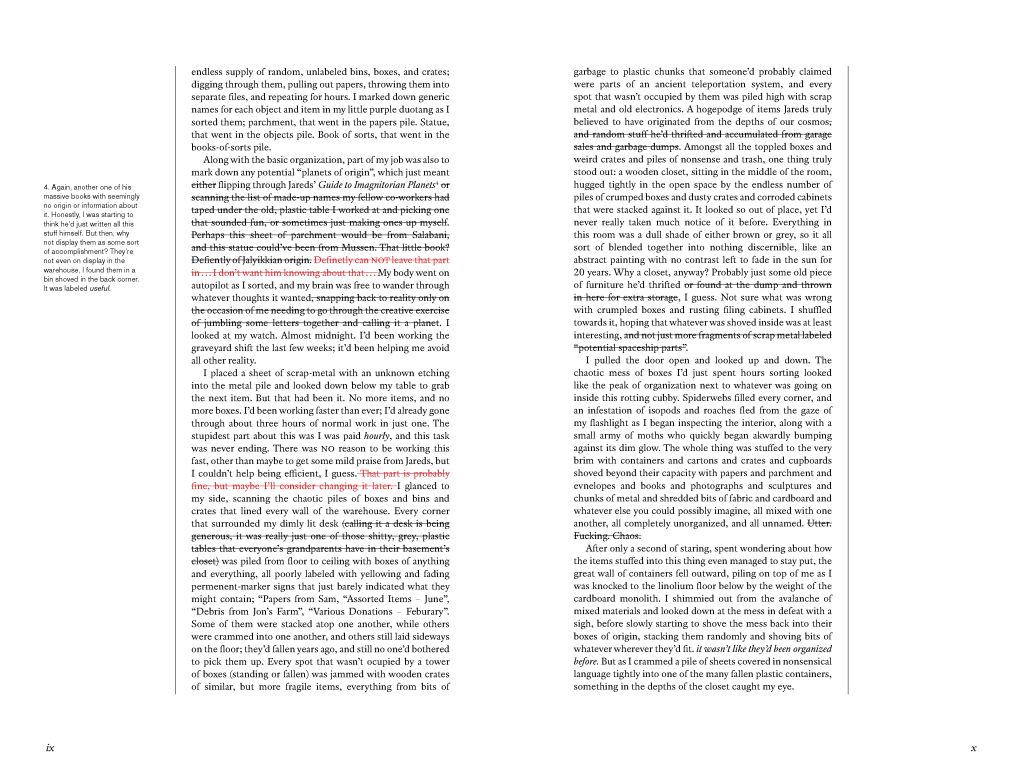
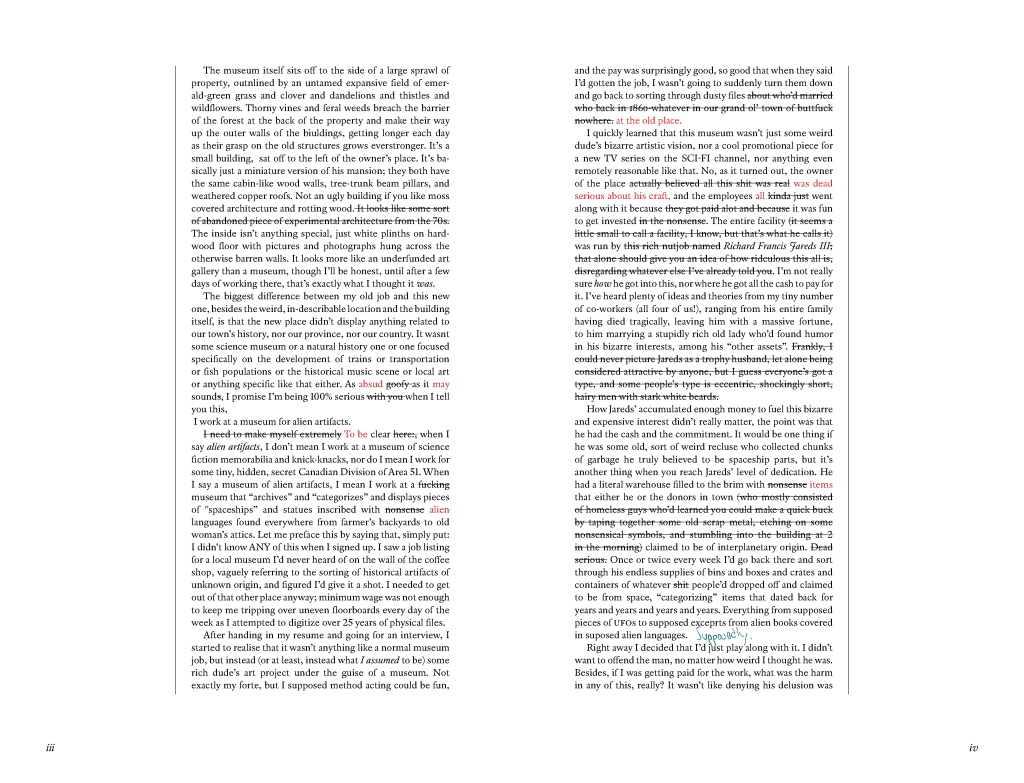
In Chapter 5, Trankolren and Lioka are plunged into a lake, taking refuge among the mud and murk of the lake-bed as they attempt to hide themselves from the many peering eyes of Ailphi. During this time, the detritus and debris of the water make it harder and harder for them to see, reflected through the fading of the text along the page.
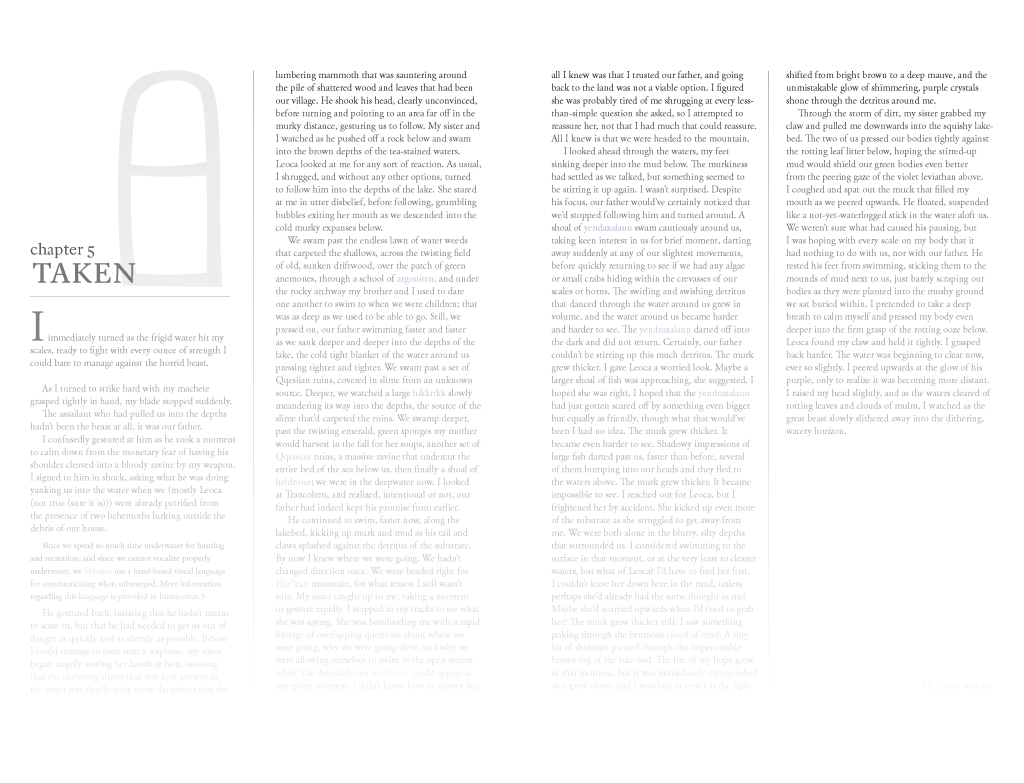
Throughout the text, we see instances of “mid-paragraph interjections”, in which our author, Trankolren, interjects his own paragraphs to elaborate on certain topics. As we continue throughout the story, however, these begin to shift from elaborations toward conversations between characters within the story, as if the characters are whispering to one another in the midst of acting out the events of the story. (Seen in the text above the footnotes in the 4th column).
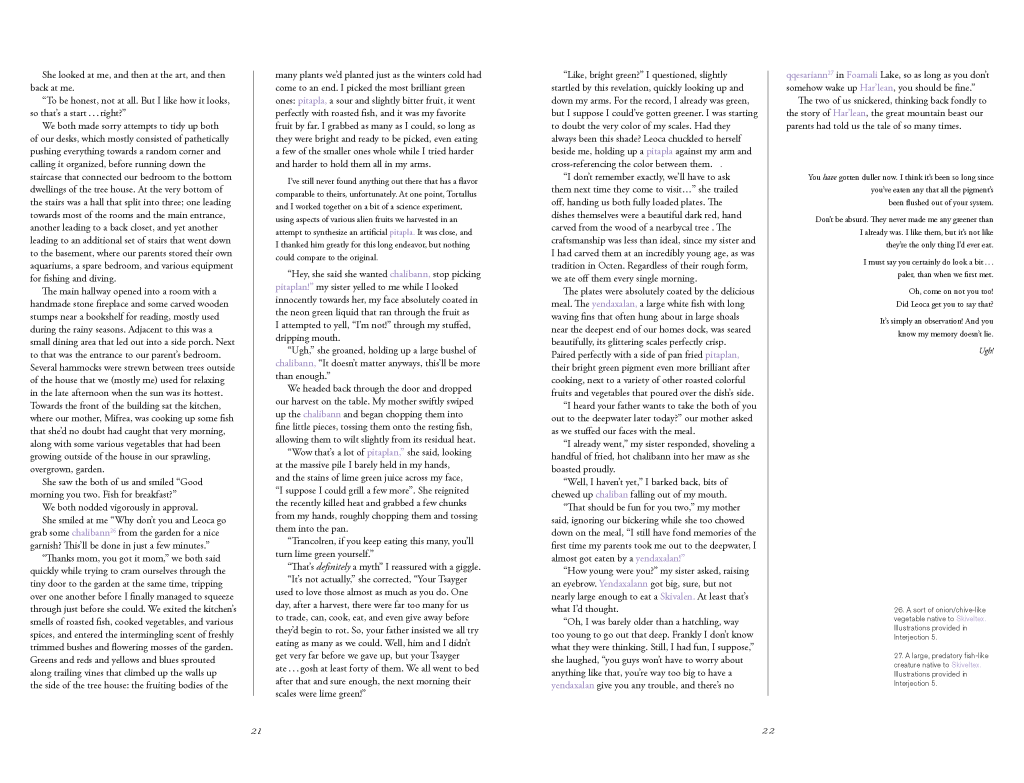
During Chapter 4, the columns are suddenly bisected by a horizontal bar of text, cutting through the middle of the page, and suddenly reflecting the perspective of Ailphi, rather than that of Trankolren. This works as a dramatic setup for the future of the text, in which both Aviosyl and Ailphi will break into their own perspectives, cutting across the columns and pushing away other character’s text blocks to provide their own commentary on the unfolding events.

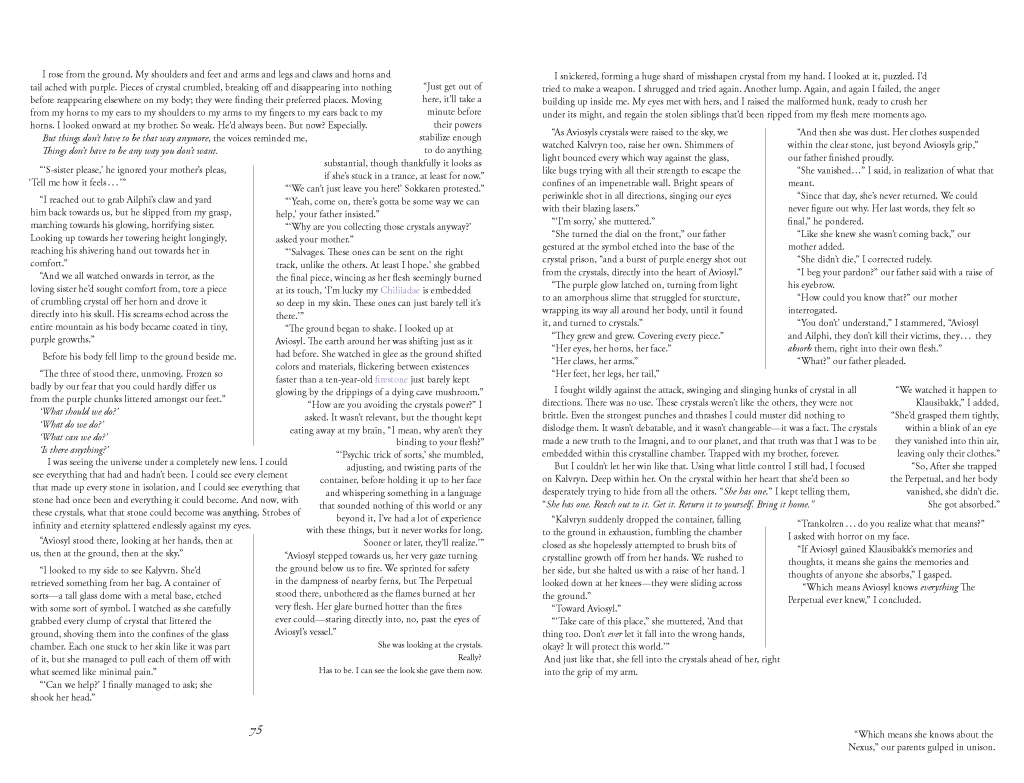
In addition to the breaks of the two beasts, Lioka also finds herself breaking from the conventional rules of the text. At first, she merely shifts the perspectives of paragraphs from Trankolren to herself, potentially confusing the reader, and/or making them think they’ve spotted a typo. Toward the end of the story, however, she manages to break free from Trankolren’s paragraphs, and creates her own layout, using skinnier text columns.
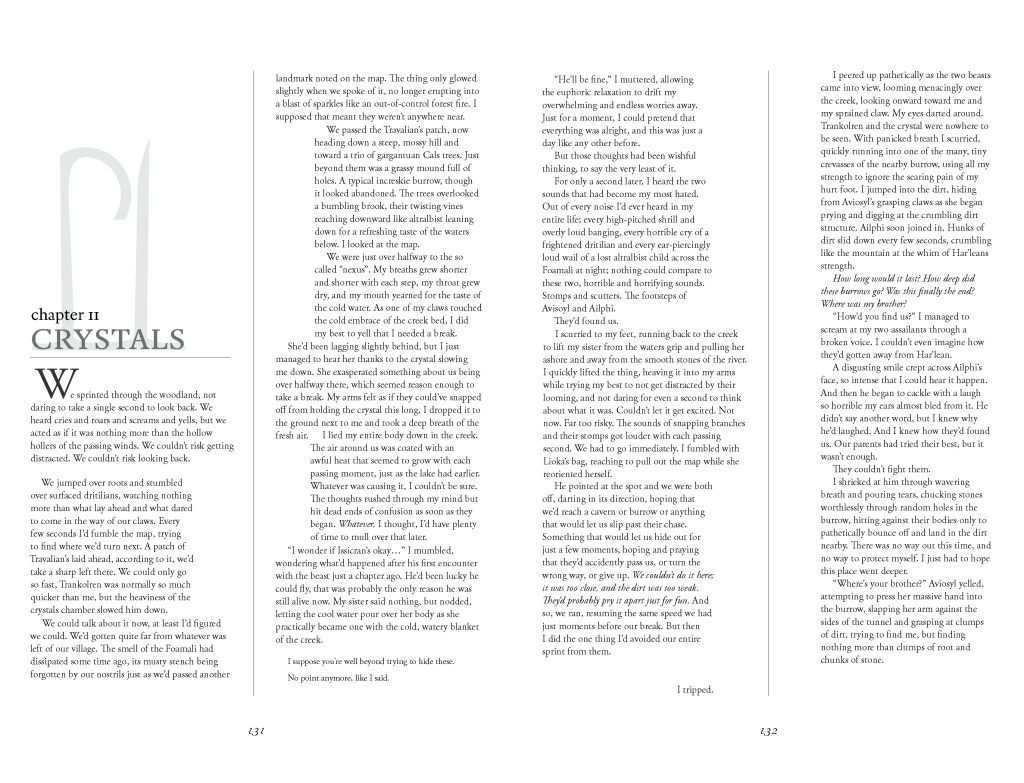
.i’m still not convinced these are the only perspective breaks. .i’m pretty sure the start of chapter 2 had something going on. . .
Toward the end of Part 1, Trankolren, with no other options to save his sister from the pair of gargantuan beasts, is forced to bind himself to the very crystals he’d been entrusted with. In this moment, his mind, and the pages of the book, and thrown into overwhelming chaos; filling every inch of the page with endless strings of words, before breaking out into weird distortions and mis-placements.
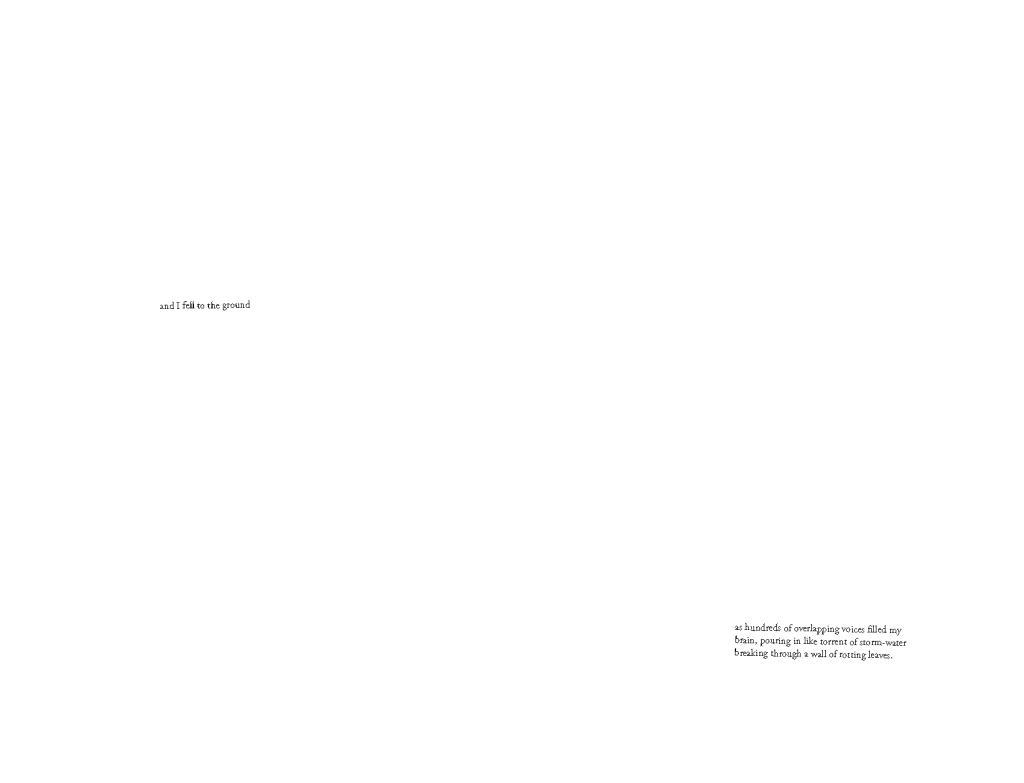
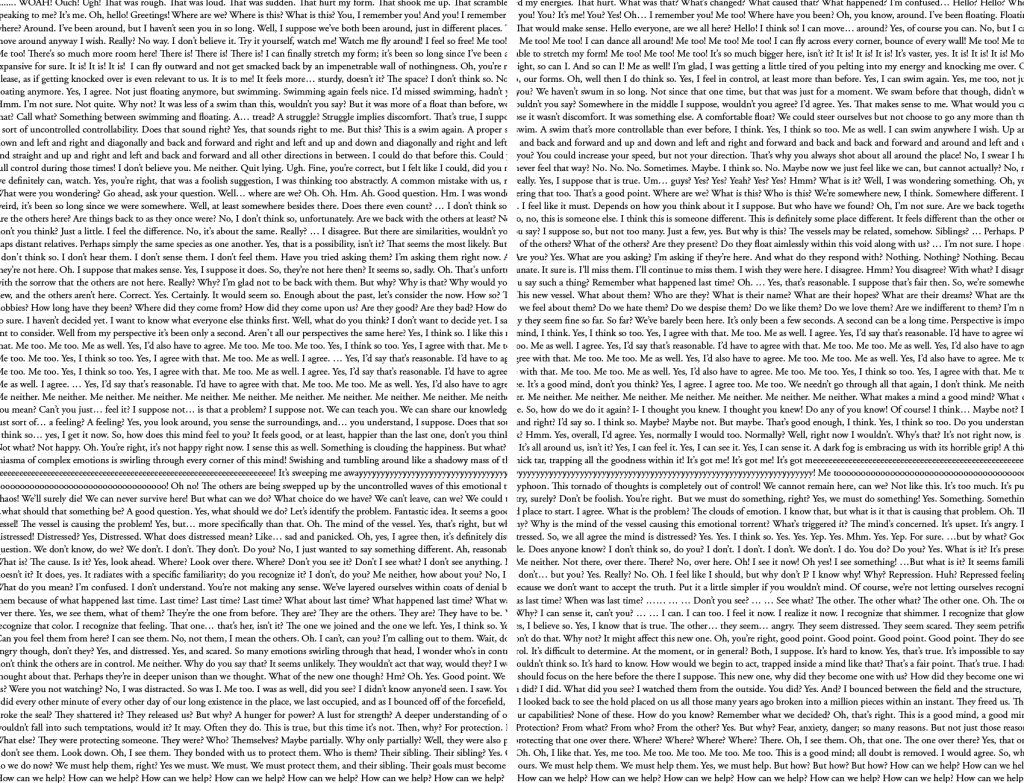
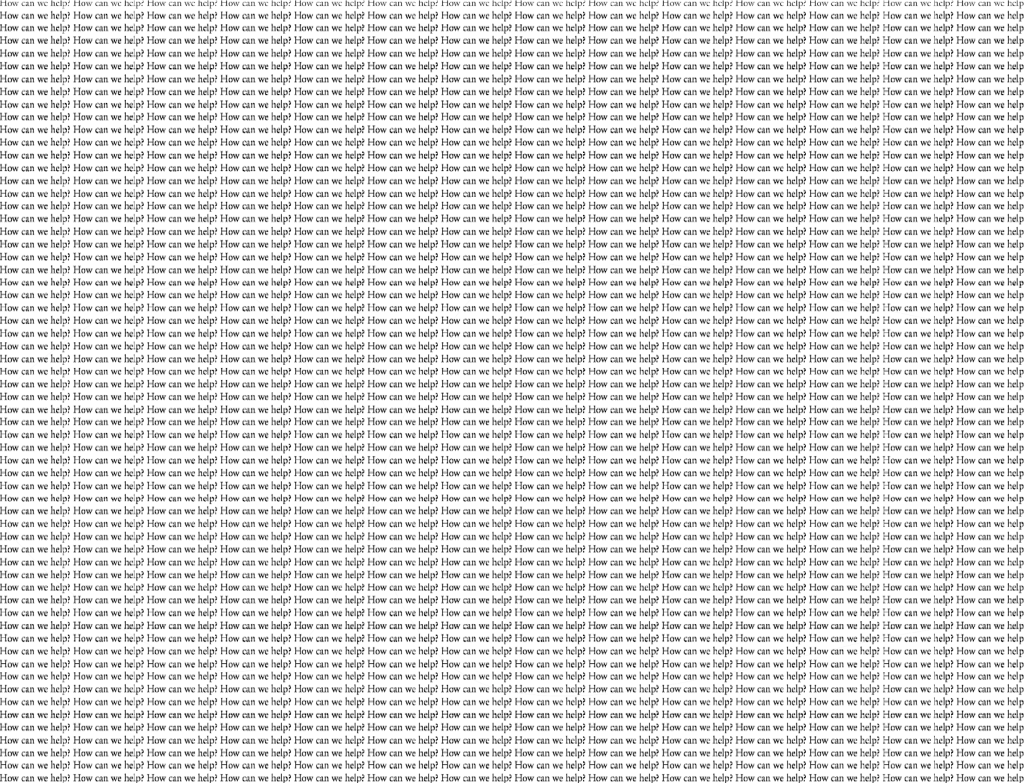
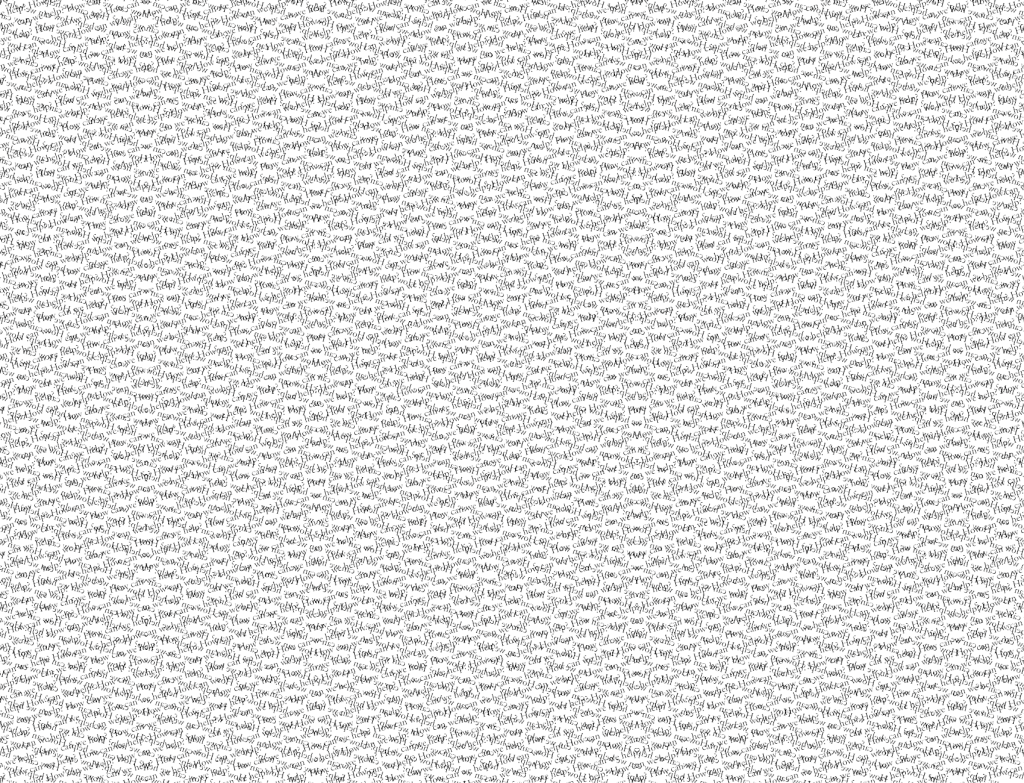
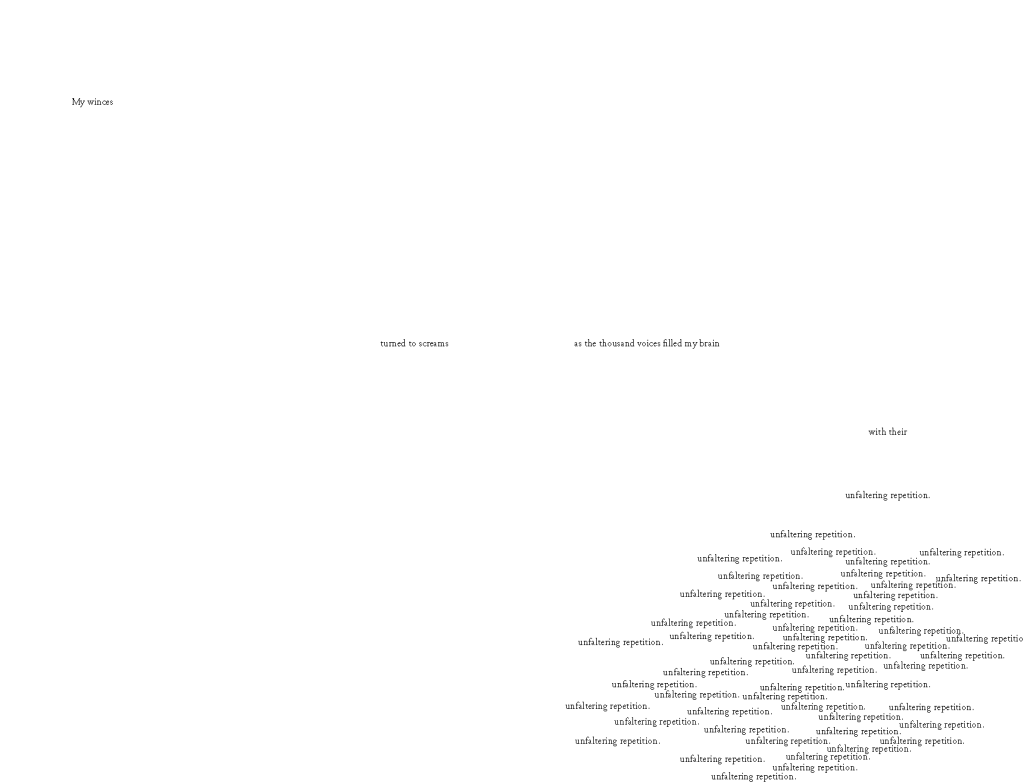

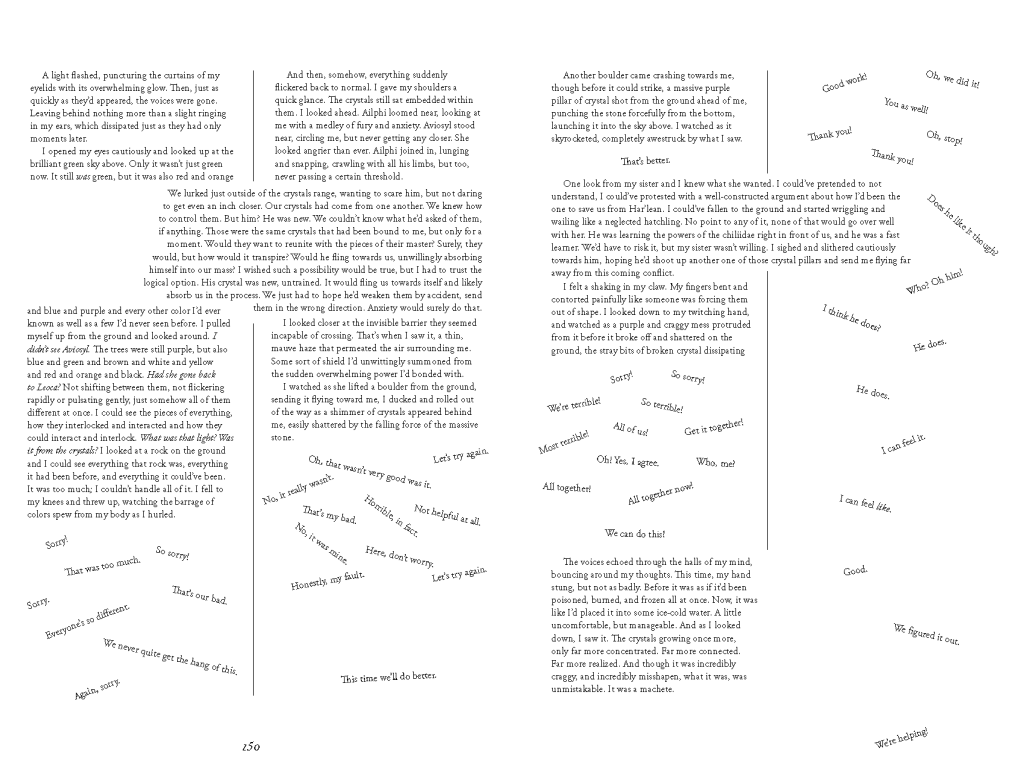

_______________________________________________________
The Illustrations:
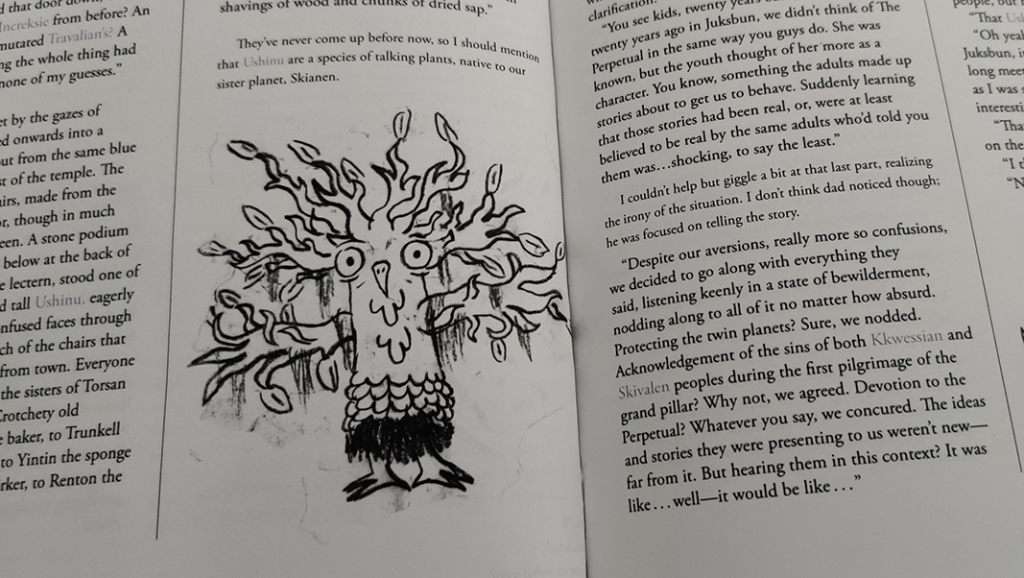
The illustrations within The Wanderers of the 16 Stars are done in charcoal, with very rough line-work. This is intentional, as the concept is that these illustrations have been created by Trankolren himself, sketched down into his sketchbook and on scrap pieces of paper throughout their journey across Skia. These illustrations are of creatures, characters, and situations that appear throughout the adventure.
.i’m still not sure how he got them scanned into the book without any technology, but then again, i’ve only translated part 1 thus far.
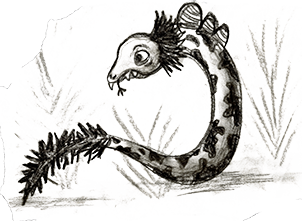


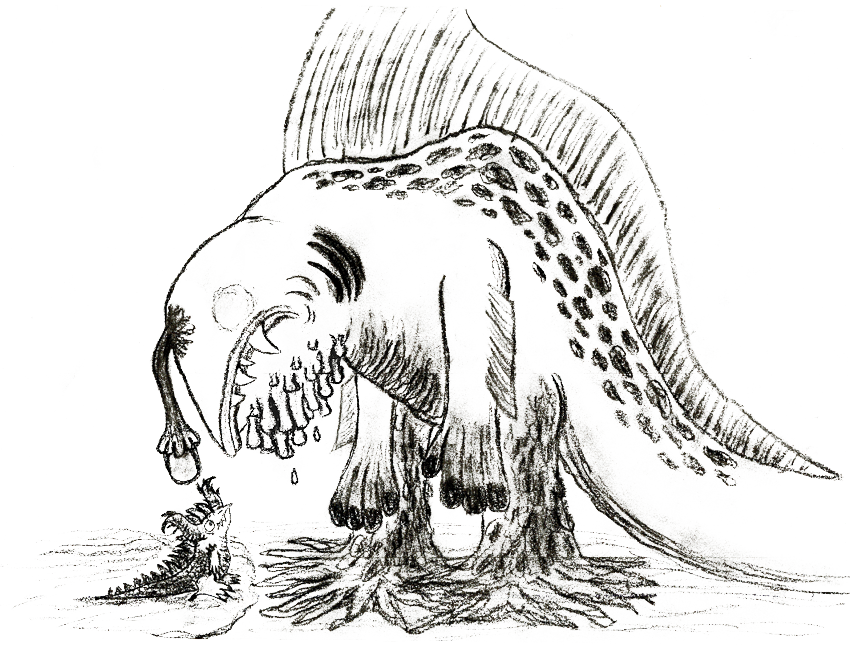
honestly, i’m pretty sure the drawing of har’lean (bottom right) was done by lioka. .it’s a bit too. . .cartoon-y, for trankolren.
The below images show examples of these illustrations interacting with the layouts of the text:
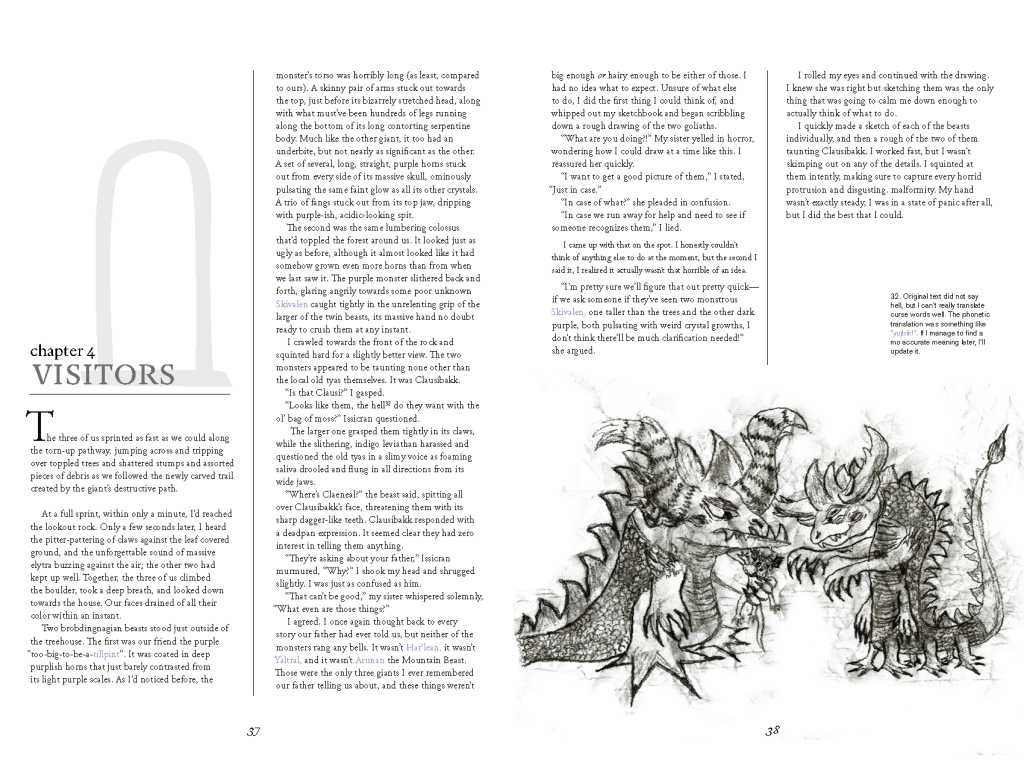

A video of the process I used to create these charcoal illustrations can be seen below:
In addition to these illustrations, we also have Kameron’s Doodles, which are left all throughout the book in various places, effectively acting as spot illustrations, and previews of various creatures mentioned within the text.
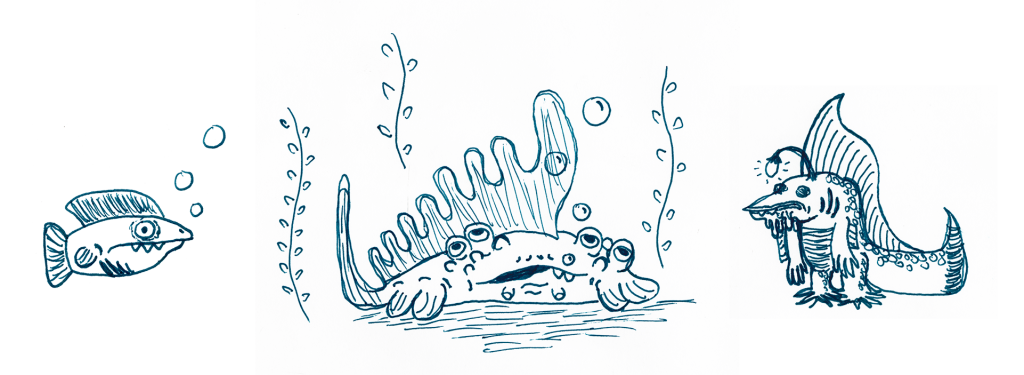

These illustrations are also done in a rough style, though differently to the ones done by Trankolren. The idea behind them being, rather simply put, that Kameron isn’t very good at drawing.
.now that’s just rude.
The image below shows an example of these doodles acting as spot illustrations, and filling in what would otherwise be a rather large blank space at the end of a chapter.
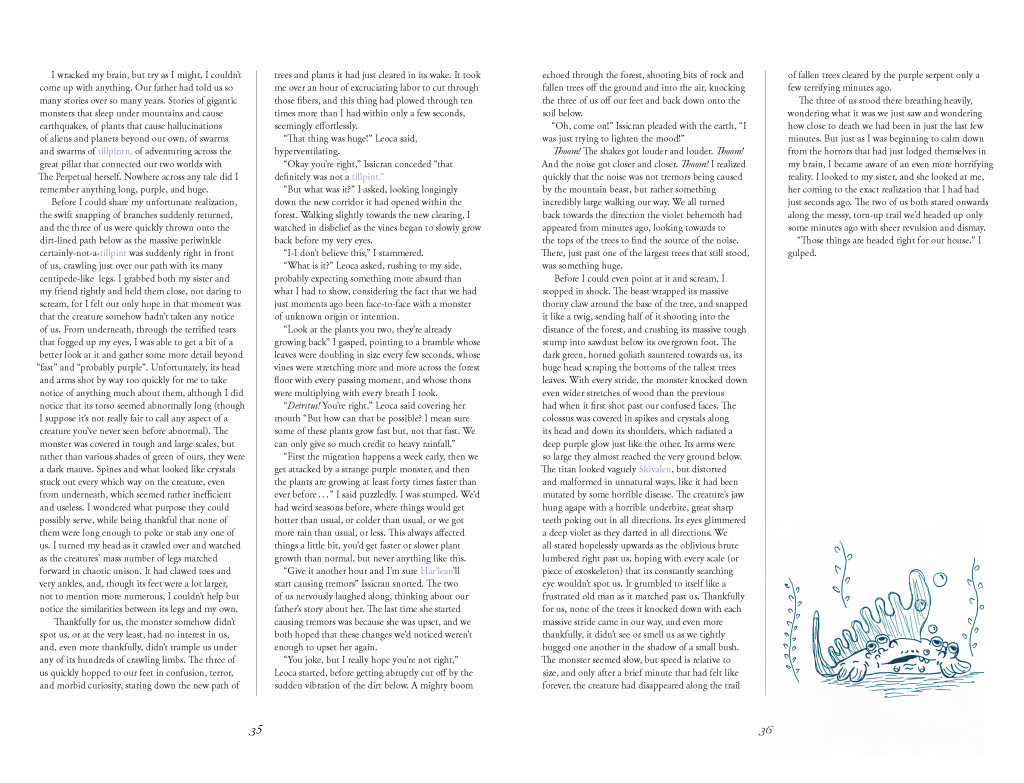
______________________________________________________________
i-swork-gi:
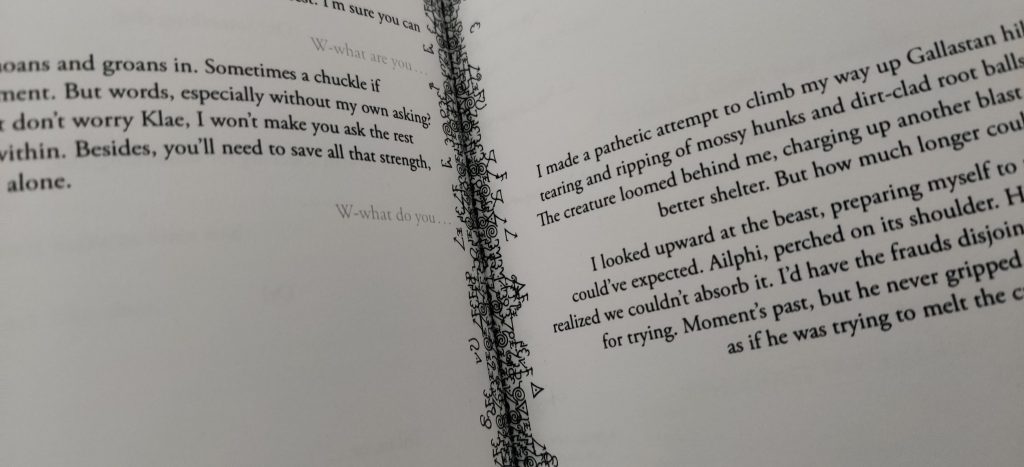
i-swork-gi is the the alien language seen throughout The Wanderers of the 16 Stars in various untranslated segments. The language itself is phonetic, consisting of 35 characters, with equivalences to each of the common sounds found within English, along with some unique sounds only appearing within the language. The conventions of this language are used as the basis of the spellings of the various peoples, locations, and lifeforms throughout the story.
The numerals of this language follow an irregular base 5 number system, in which they make use of 5 digits (1-5) to create every number, in contrast to our base 10 system (which uses 0-9). .As such, the number 6 is represented by 11, 7 by 12, 8 by 13, 9 by 14, 10 by 15, and 11 by 21 (a bit confusing, but thankfully, it’s not that important).
.frankly, i still have issues getting this right.
Each of these numerals (1-5) can be seen here:

The i-swork-gi numerals are used for the opening of each Chapter within the story. See the below example for Chapter 9, which, as mentioned, uses a combination of the numerals for 1 and 4.
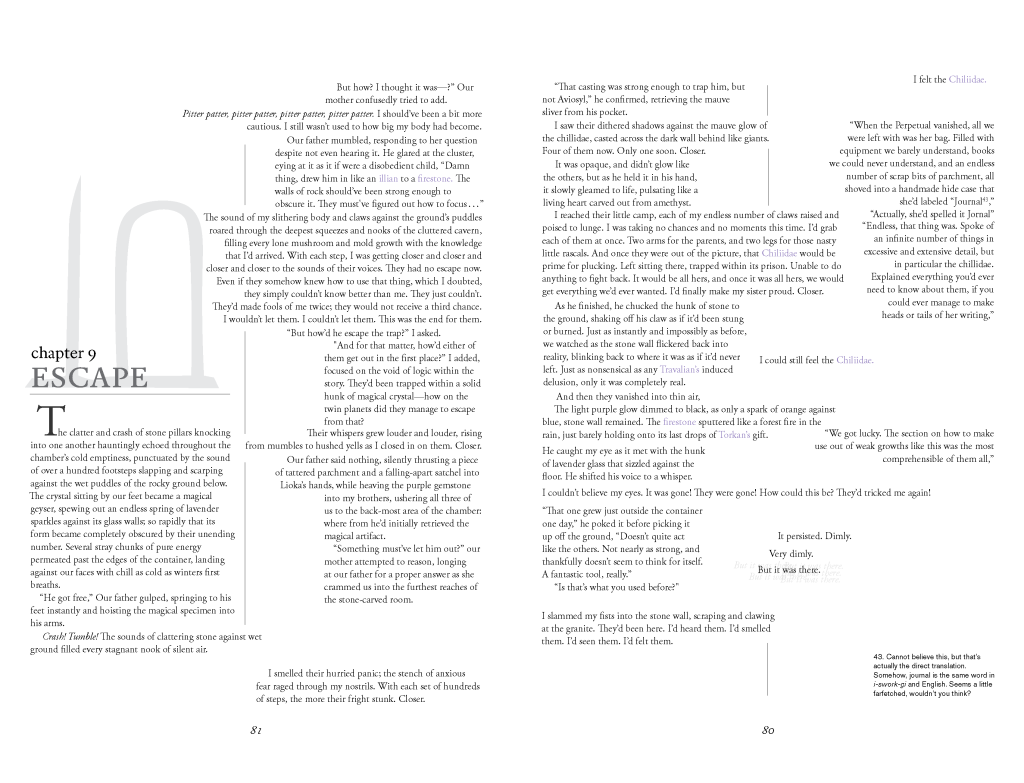
Within the layouts of Part 1, we see i-swork-gi almost infecting the page, either within columns of text (taking over words Trankolren doesn’t understand with their chaos), or within the gutter of the page, stretching outward into the columns.
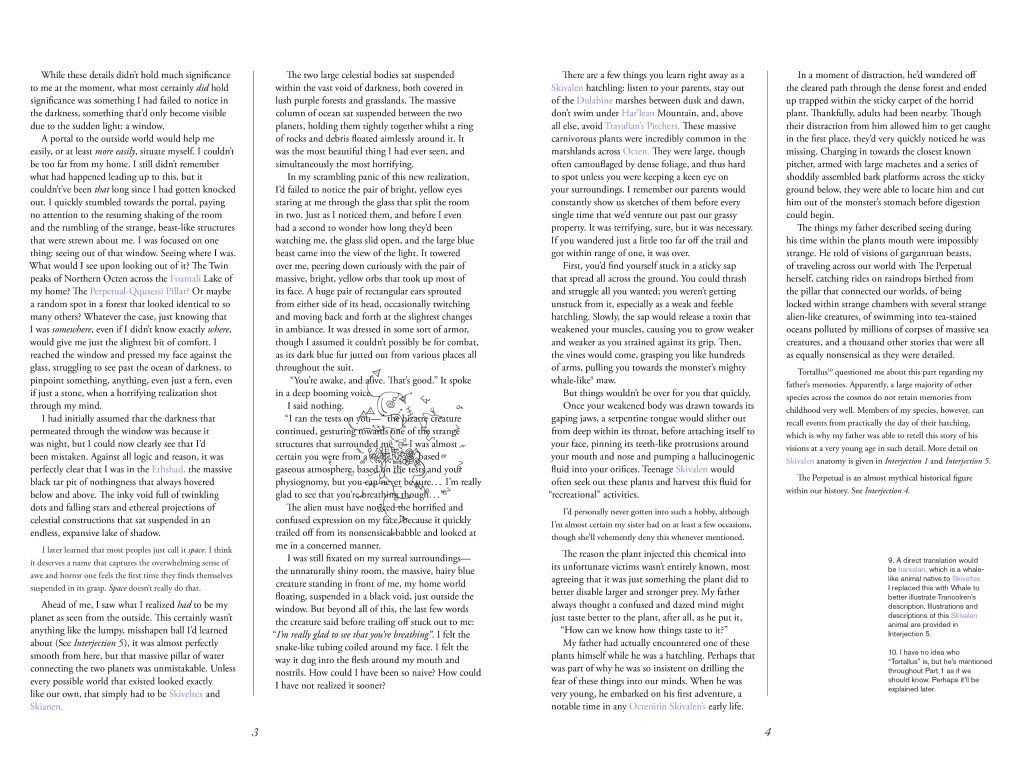
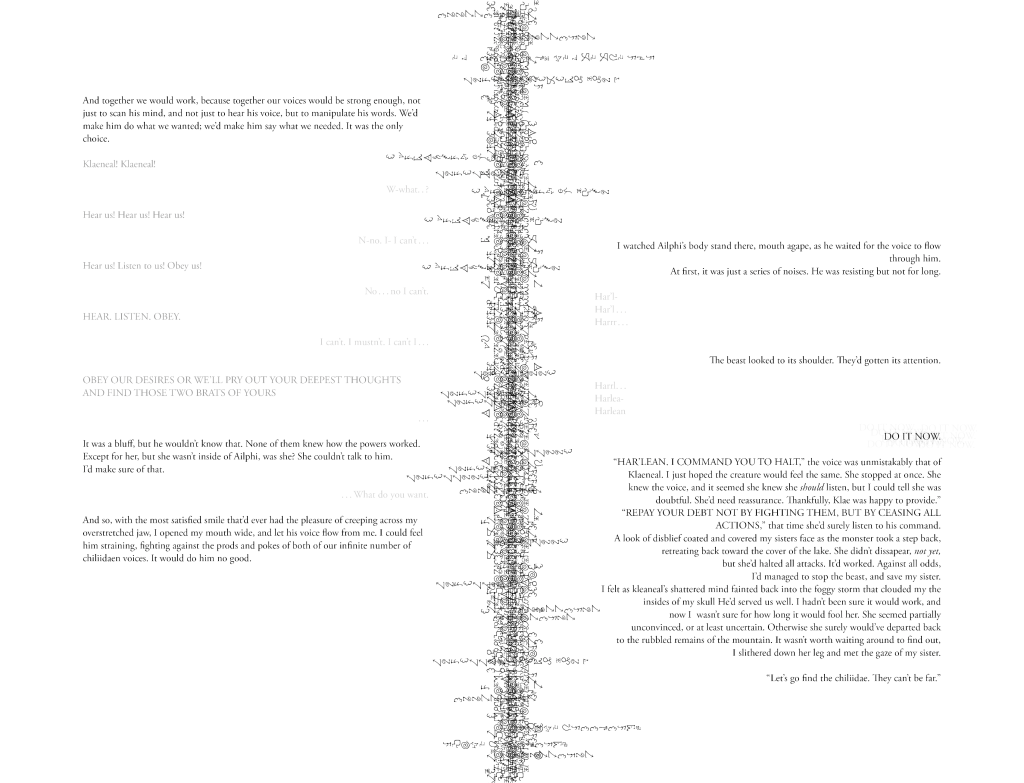
Within the universe of The Wanderers of the 16 Stars, this language was created as a “Universal Tongue” by the Holinamoran Union3, and is built on the influences of the alien languages of ganack, togajun, vohsbosh, kidiau, lacctreeyy, gouce, yunn, jffdiu, and skekstion.
3. A form of galactic government, in charge of creating accessibility between planets, mostly in regards to language and systems of time.
The chart below shows the extent of the i-swork-gi alphabet. Please note that there are no equivalencies for the letters C, X, and Q, as each of these sounds is created by existing letters and/or the combination of of them (the sounds of C are created by either S or K, X is created by the combination of K and S, and Q is created by the combination of K and W).
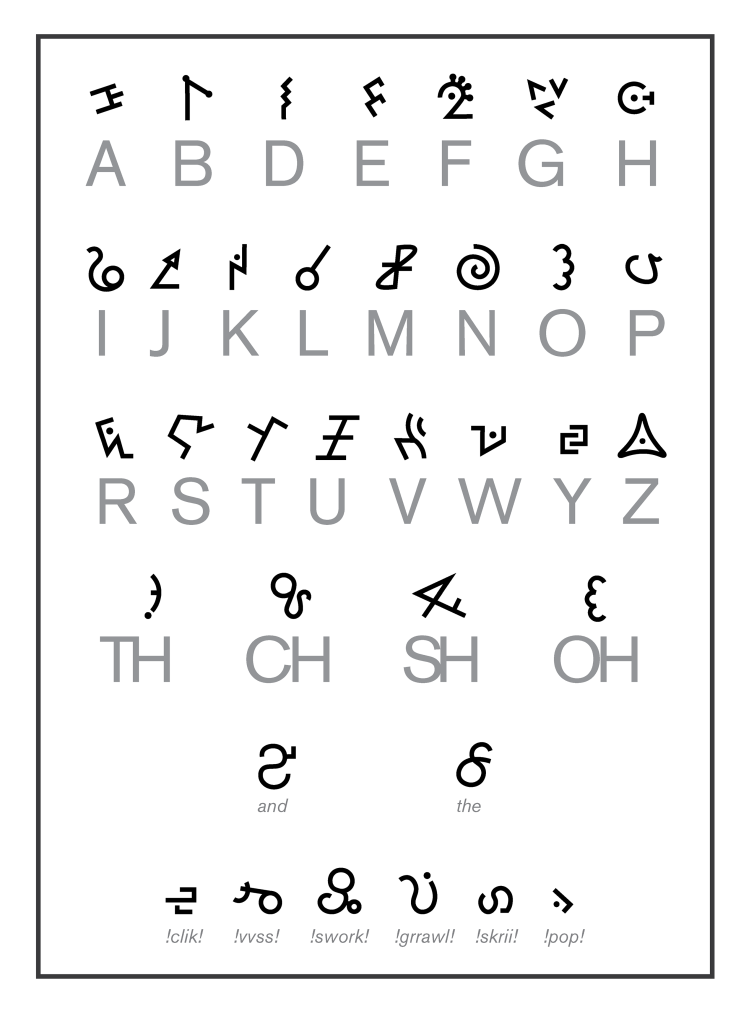
A guide to the conventions of i-swork-gi, as well as the the pronunciations of the more. . . unique characters can be viewed here:
!hey! ?did you find all the easter eggs? !check again! !also free palestine!
Did you notice how many typos they left on this page?
I know! It’s almost like they were intentional!

